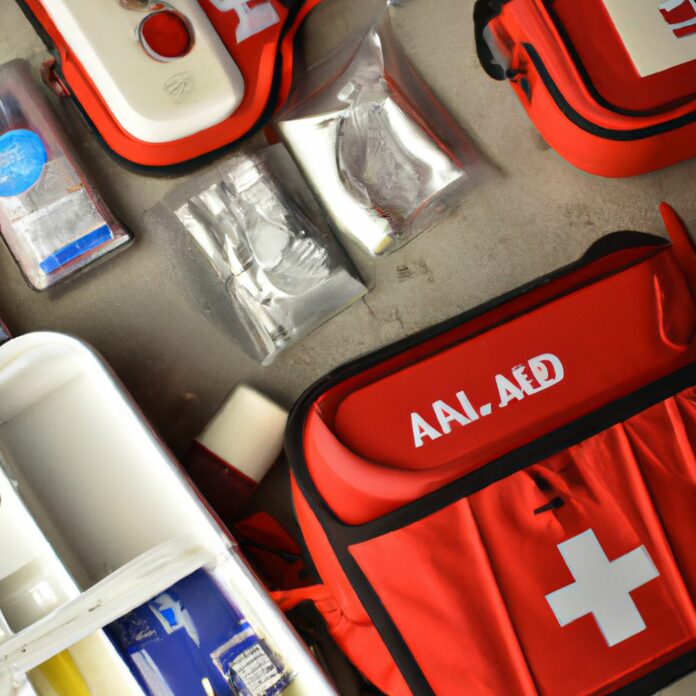A tactical first aid kit is a crucial component for individuals involved in high-risk or emergency situations. This comprehensive kit contains essential medical supplies and equipment to address injuries and provide immediate medical assistance until professional help arrives. Being prepared with a well-stocked tactical first aid kit can make a significant difference in saving lives during critical situations.
To ensure the effectiveness of a tactical first aid kit, it is important to include specific items that cater to various types of injuries and emergencies. Some essential items that should be included in a tactical first aid kit are:
- Bandages and Dressings: These are essential for covering wounds and stopping bleeding.
- Antiseptic Solutions: To prevent infection and clean wounds.
- Medical Tape: Used for securing bandages and dressings in place.
- Splinting Materials: For stabilizing fractures or injuries to limbs.
- Hemostatic Agents: These assist in controlling severe bleeding.
- Medications: Including pain relievers, antihistamines, and any necessary prescription medications.
- Medical Instruments: Such as scissors, tweezers, and a thermometer.
- Personal Protective Equipment (PPE): Gloves, masks, and eye protection to ensure safety during medical procedures.
- Emergency Communication Devices: Such as a whistle or signaling mirror for communication and attracting attention in emergencies.
In addition to the essential items, there are certain considerations to keep in mind when assembling a tactical first aid kit. These include customization based on skill level, consideration of the environment and situation in which the kit will be used, regular stock checking and replenishment of supplies, and ensuring training and familiarity with the kit contents.
The importance and benefits of a tactical first aid kit is immense. It enables individuals to provide immediate response to injuries, potentially saving lives. Having a well-prepared kit enhances survival and emergency preparedness in challenging situations. The versatility of a tactical first aid kit makes it suitable for various scenarios and environments, ensuring that individuals are equipped to handle different emergencies efficiently.
Essential Items for a Tactical First Aid Kit
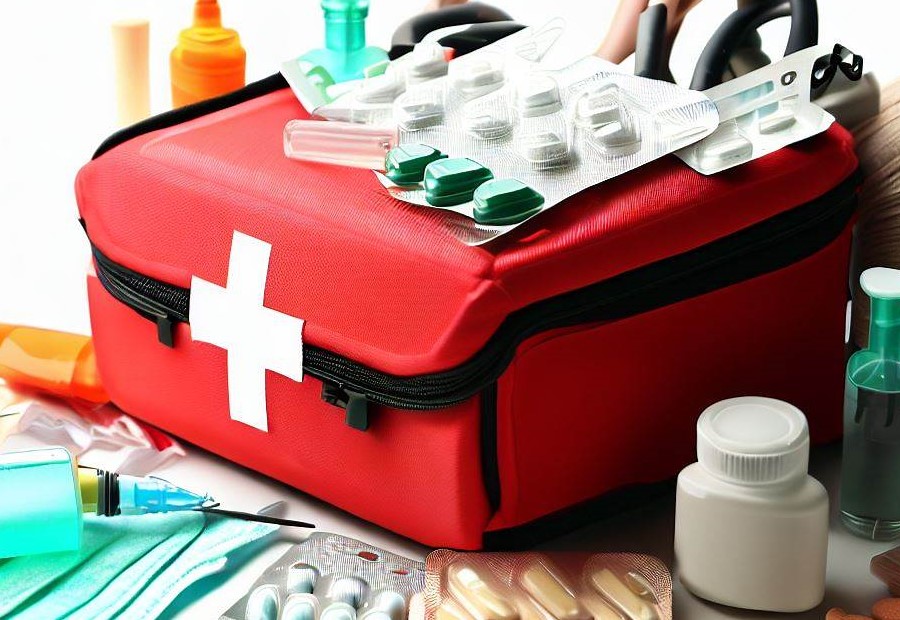
When it comes to assembling a tactical first aid kit, there are certain essential items that should never be overlooked. From bandages and dressings to medications and medical instruments, each sub-section plays a crucial role in ensuring the kit is well-rounded and prepared for any emergency situation.
So, let’s dive into the must-have components that will empower you to handle injuries effectively and provide immediate care when it matters most.
Bandages and Dressings
- Bandages and dressings are essential for covering wounds and providing protection. They can be used to control bleeding, prevent infection, and promote healing. Different types of bandages, such as adhesive bandages, gauze rolls, and elastic bandages, serve different purposes.
- Dressings are placed directly on wounds to absorb blood and other fluids. They help to keep the wound clean and promote healing. Common types of dressings include adhesive dressings, non-adhesive dressings, and hydrogel dressings.
Fact: Properly applying bandages and dressings can significantly reduce the risk of infection and promote faster healing of wounds.
Antiseptic Solutions
When it comes to a tactical first aid kit, having the right antiseptic solutions is crucial for preventing infection and promoting wound healing. Here are some options to consider:
- Iodine solution: This antiseptic solution, like Betadine, effectively kills bacteria, fungi, and viruses.
- Chlorhexidine solution: Widely used in healthcare settings, chlorhexidine is a powerful antiseptic that provides long-lasting protection against a broad spectrum of microorganisms.
- Hydrogen peroxide: Known for its bubbling action, hydrogen peroxide is a common antiseptic solution used to clean wounds, although it may delay wound healing if used frequently.
- Alcohol-based antiseptic: Products containing ethyl or isopropyl alcohol are commonly used to disinfect the skin before injections or minor procedures.
- Povidone-iodine solution: This antiseptic solution, also known as Betadine, is effective against bacteria, viruses, and fungi.
- Saline solution: Although not an antiseptic, saline solution is widely used for wound irrigation to clean and flush away debris and bacteria.
It’s essential to choose antiseptic solutions that are compatible with the intended use and the type of injuries you anticipate encountering. Remember to follow the instructions provided and ensure the solutions are within their expiration dates.
In certain situations, it may be beneficial to have a combination of antiseptic solutions to address various wound types and infection risks. Customizing your kit based on the specific needs of your environment and situation will enhance its effectiveness.
Medical Tape
When it comes to a tactical first aid kit, medical tape is an essential item to include. It serves various purposes and can be indispensable in emergency situations. Here are some key uses of medical tape:
- Securing bandages and dressings: Medical tape is used to firmly hold bandages and dressings in place, ensuring they stay in position and provide proper coverage.
- Creating splints: In situations where a broken bone needs to be immobilized, medical tape can be used along with splinting materials to provide support and stability.
- Securing medical instruments: When performing certain procedures or administering treatments, medical tape can be used to secure medical instruments, such as IV lines or catheters, in place.
- Emergency repairs: Medical tape can be used for temporary fixes in emergency situations, such as securing a torn piece of clothing or creating makeshift slings.
Medical tape is an essential component of a well-equipped tactical first aid kit. Its versatility and adhesive properties make it a valuable tool in providing immediate care and stabilization in various scenarios.
Splinting Materials
Splinting materials, such as the SAM Splint, triangular bandages, elastic bandages, and duct tape, are essential components of a tactical first aid kit. These materials provide support and immobilization for injured limbs, reducing the risk of further damage or pain. The SAM Splint is a versatile and lightweight splint made of flexible aluminum and foam, which can be molded to fit various body parts and provides stability.
Triangular bandages are multi-purpose bandages that can be used as slings or to create makeshift splints when combined with sturdy objects like sticks or boards. Elastic bandages are stretchable bandages that are useful for securing splints in place and providing additional support to the injured area. Duct tape, on the other hand, is a strong adhesive tape that can be used to secure splints and create a more rigid support structure.
When selecting splinting materials, it is important to consider the specific needs of the situation and the anticipated injuries in tactical environments. Factors such as the size and weight of the materials, as well as their effectiveness and ease of use, should be taken into account. Regular stock checking and replenishment are necessary to ensure that the splinting materials are always available and in good condition.
Proper training and familiarity with the contents of the kit are crucial for efficient and effective splinting procedures when emergencies arise.
Hemostatic Agents
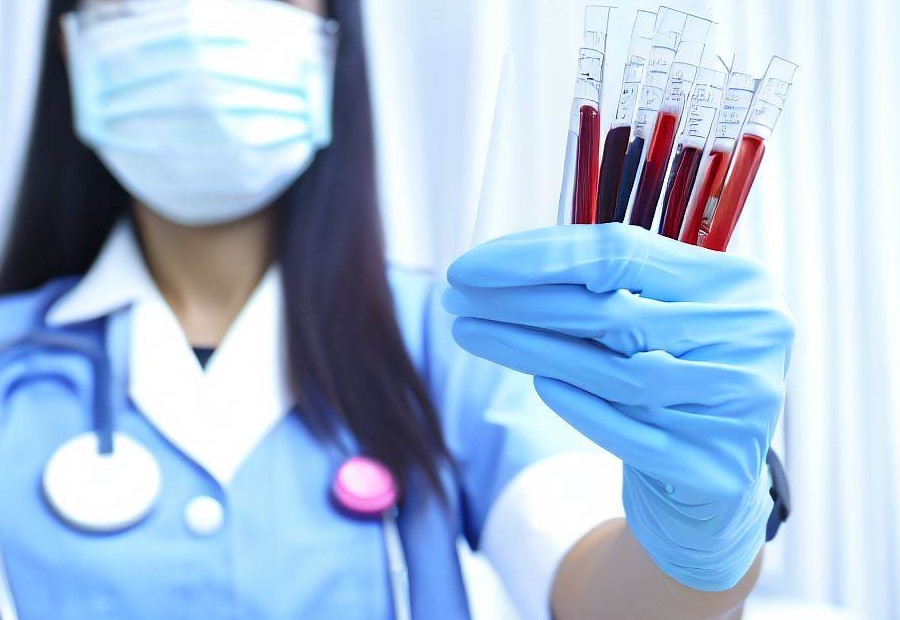
| Hemostatic Agents |
| Hemostatic agents are crucial components of a tactical first aid kit. They help control bleeding quickly and effectively, especially in severe injuries. These agents work by promoting blood clotting, reducing the risk of further blood loss. |
| One commonly used hemostatic agent is QuikClot. It contains a mineral called zeolite that enhances clotting by absorbing and concentrating platelets and clotting factors. |
| Celox is another effective hemostatic agent. It works by helping blood clotting through the formation of a gel-like substance. |
| When choosing a hemostatic agent, consider the severity of potential injuries and the environment in which the kit will be used. It is essential to consult with medical professionals or experts to ensure you select the most appropriate hemostatic agent for your needs. |
| Proper training and familiarity with the application of hemostatic agents is crucial to ensure their effective use during emergencies. Understanding the proper technique and dosage is essential for the best outcome. |
Medications
When it comes to including medications in a tactical first aid kit, it is crucial to carefully select the right ones that can provide immediate relief or help manage potential injuries. Here are some essential medications to consider:
- Non-prescription pain relievers such as acetaminophen or ibuprofen can be included to effectively alleviate minor aches and pains.
- It is advisable to have a course of broad-spectrum antibiotics to treat infections that may arise from wounds or injuries.
- Antihistamines like diphenhydramine can play a crucial role in treating allergic reactions that could occur in uncertain environments.
- Including an antiseptic ointment like Bacitracin in the kit can help prevent infection in open wounds.
- Having anti-diarrheal medication can be beneficial in situations where proper sanitary conditions might be compromised, as it can effectively treat gastrointestinal issues.
Regularly check the expiration dates of the medications in the tactical first aid kit and replenish supplies as needed. Additionally, consider individual medical needs and consult with a healthcare professional for personalized advice on the specific medications to include based on your circumstances and potential risks.
Medical Instruments
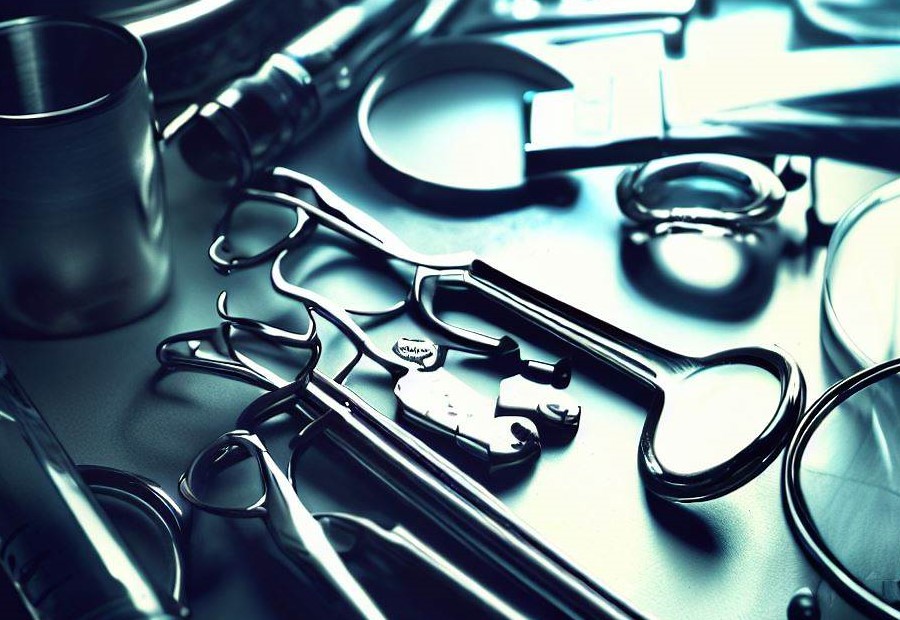
Medical instruments play a crucial role in a tactical first aid kit. They are essential for performing various medical procedures and assessments in emergency situations. A scalpel, a sharp precision cutting tool used for making incisions, is utilized for its precise cutting capabilities.
Tweezers and forceps, similar to tweezers but with a different shape, are used for gripping and holding objects during medical procedures. They are specifically handy for removing splinters or foreign objects from wounds. In emergency situations, scissors are necessary for cutting bandages, clothing or other materials.
Needle and thread are included in the tactical first aid kit to suture wounds when immediate medical help is not available. Surgical staplers provide a quick and secure way to close wounds effectively.
Additionally, the inclusion of a stethoscope allows for examining the sounds of the heart, lungs, and other internal organs, while a blood pressure cuff is used to measure blood pressure. Lastly, a thermometer is an essential tool for measuring body temperature.
It is important to ensure that these medical instruments are part of a tactical first aid kit to guarantee that necessary medical procedures can be performed effectively in emergency situations.
Personal Protective Equipment
When it comes to a tactical first aid kit, personal protective equipment (PPE) plays a crucial role in ensuring the safety of both the first responder and the injured individual. PPE serves as a barrier against potential hazards and minimizes the risk of infection or further injury.
- Gloves: Disposable gloves should be included to protect against contamination and to prevent the spread of infections.
- Face masks: High-quality face masks provide personal protective equipment against airborne particles, reducing the risk of inhaling harmful substances.
- Eye protection: Safety goggles or glasses shield the eyes from debris, fluids, or chemicals and prevent potential eye injuries.
- Protective clothing: Durable and lightweight clothing, such as coveralls or gowns, can shield against bodily fluids and provide an extra layer of personal protective equipment.
- Respirators: In situations where there is a risk of inhaling harmful chemicals or toxins, respirators with appropriate filters should be included.
- Head protection: Helmets or hard hats protect against head injuries caused by falling objects or impacts.
- Foot protection: Sturdy boots with reinforced toes offer protection against sharp objects, uneven terrain, or falling debris.
Having these personal protective equipment items readily available in a tactical first aid kit ensures the safety and well-being of the first responders and allows them to provide effective medical assistance to those in need.
Emergency Communication Devices
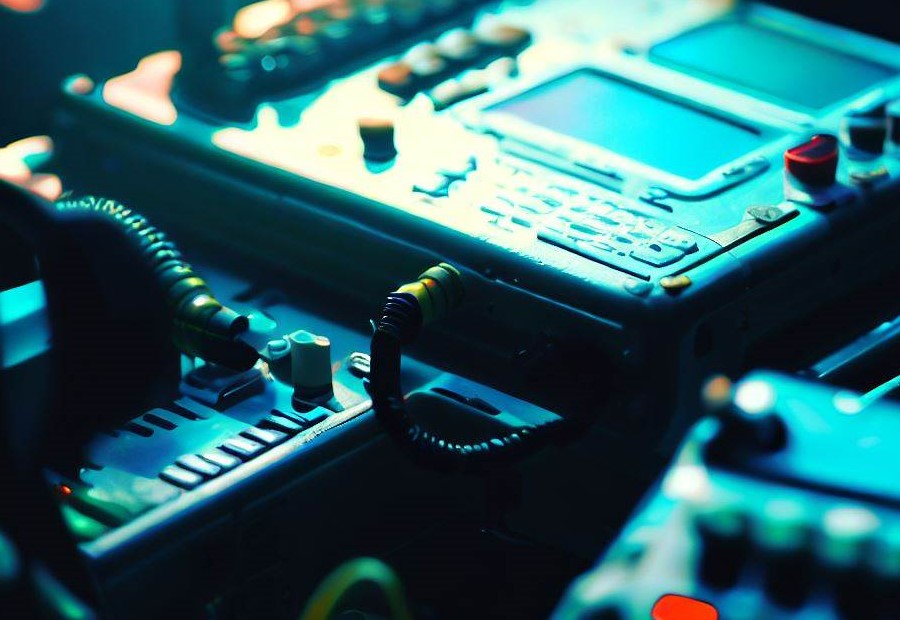
Including emergency communication devices in your tactical first aid kit is crucial to ensure effective communication in emergency situations. These devices play a vital role in relaying important information and coordinating rescue efforts. Here are some essential devices that should be included:
- Two-way radios: Two-way radios enable instant communication between team members and emergency responders.
- Cell phones: It is important to have a fully charged cell phone with emergency contacts programmed to provide an additional means of communication.
- Signal flares: Signal flares can visually alert rescuers or other team members to your location.
- Whistles: Lightweight whistles can be used to attract attention if verbal communication is not possible.
- Emergency beacons: Emergency beacons emit a distress signal and are effective for alerting search and rescue teams or nearby vessels.
When selecting emergency communication devices, consider the following:
- Ensure that the devices have a sufficient range to maintain communication in your intended operating area.
- Check that the batteries are properly charged and carry extra batteries or a portable charging option.
- Take into account the durability and waterproof capabilities of the devices to withstand harsh environments.
- Train all team members on the proper use of the communication devices to ensure effective communication during emergencies.
By incorporating these emergency communication devices into your tactical first aid kit, you can enhance your ability to communicate important information, coordinate rescue efforts, and ultimately improve the outcome of emergency situations.
Additional Considerations for a Tactical First Aid Kit
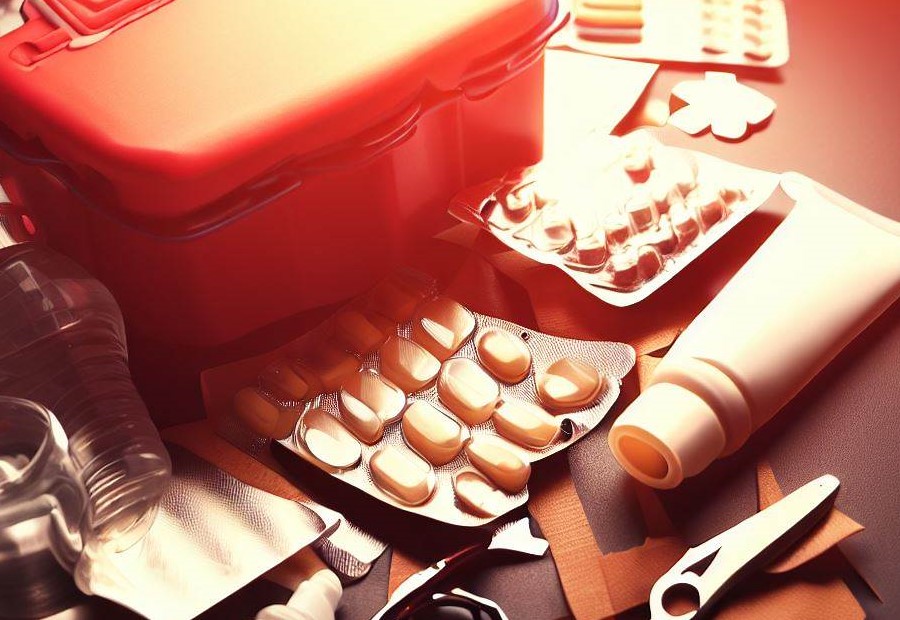
When it comes to assembling a tactical first aid kit, there are essential components we all know, like bandages and scissors. But what about the additional considerations that can make a crucial difference in emergency situations?
In this section, we’ll explore how customizing your kit based on skill level, considering the environment and situation, regular stock checking, and training with kit contents can significantly enhance your preparedness. Let’s dive into these vital aspects that go beyond the basics of a tactical first aid kit.
Customization based on Skill Level
When creating a tactical first aid kit, it is crucial to incorporate customization based on skill level. By tailoring the kit’s contents to the individual’s level of knowledge and training, it ensures that the necessary tools and supplies are available for effective emergency response.
| Level | Contents |
| Entry Level | Basic bandages and dressings, antiseptic solutions, medical tape, splinting materials |
| Intermediate Level | Hemostatic agents, additional medications for pain relief or allergic reactions, medical instruments like scissors and forceps |
| Advanced Level | Advanced medical equipment such as tourniquets and chest seals, specialized medications for specific conditions or injuries |
By customizing the kit based on skill level, individuals can carry the appropriate tools and supplies they are trained to use effectively. This approach avoids including unnecessary items that may not be useful in their level of expertise, thereby preventing confusion and potential mistakes during critical situations.
Consideration of Environment and Situation
Consideration of the environment and situation is vital when compiling a tactical first aid kit. It is essential to tailor the kit to address the specific challenges and circumstances encountered in different environments.
For instance, in a wilderness setting, it is important to include items such as snake bite kits and insect repellent to mitigate potential risks. In urban settings, the kit may need to include supplies for treating traumatic injuries and providing immediate medical assistance until professional help arrives.
In addition, the environment also affects the size and portability of the kit. For situations where mobility is crucial, like military operations or outdoor adventures, an ideal kit would be compact and lightweight. Furthermore, the kit should take into account the local climate and weather conditions to ensure the contents remain effective and undamaged.
Another factor to consider is the intended purpose of the kit. If it is specifically for personal use, it can be customized according to individual needs and medical conditions. However, if the kit is meant for a larger group or organization, it should cater to a diverse range of potential injuries or illnesses that may occur.
By carefully considering the environment and situation, a tactical first aid kit can be strategically designed to provide the necessary medical support and increase the chances of successful treatment and recovery.
Regular Stock Checking and Replenishment
Regular stock checking and replenishment is a crucial aspect when it comes to maintaining a tactical first aid kit. By regularly monitoring and restocking the kit, you can ensure its readiness for emergencies. Here are some key points to consider:
- Check expiration dates: Regularly inspect the items in your first aid kit to ensure that none of the products have expired. Expired items may not be effective and can compromise the effectiveness of your kit.
- Restock used items: Keep track of the items you have used or depleted during an emergency or training scenario. Replace these items promptly to maintain a fully stocked kit.
- Consider environmental factors: Evaluate the specific environmental conditions in which your kit will be stored or used. Extreme temperatures or humidity levels may affect the shelf life or efficacy of certain products, such as medications or adhesive materials.
- Create a checklist: Develop a checklist of essential items in your kit and regularly review it to ensure that all items are present and in good condition.
- Replenish items after use: Whenever you use an item from your first aid kit, make sure to replace it promptly. This ensures that your kit is always ready for the next emergency.
Checking and replenishing stocks is essential to maintaining the effectiveness of your tactical first aid kit. By consistently monitoring and restocking the kit, you can be confident in its ability to provide immediate and necessary medical assistance in various scenarios.
Training and Familiarity with Kit Contents
When it comes to a tactical first aid kit, training and familiarity with kit contents are crucial for effective emergency response.
- Attending a first aid training course is essential to acquire the necessary knowledge and skills for administering medical assistance in various situations.
- Regularly reviewing and familiarizing yourself with the contents of your tactical first aid kit is important to ensure you know how to use each item correctly.
- Practicing scenarios helps simulate real-life emergencies and enhances your ability to respond quickly and efficiently.
- Staying updated on the latest advancements in first aid techniques and technologies through refresher courses and reliable sources is recommended.
- Developing a familiarity with the layout and organization of your kit allows you to easily access the required items during high-pressure situations.
Pro-tip: Consider conducting mock drills with your team or fellow first aid responders to further improve coordination and teamwork, ensuring everyone is well-prepared to handle emergencies.
Remember, thorough training and familiarity with the contents of your tactical first aid kit can make a significant difference in saving lives and providing effective medical aid in critical situations.
Tactical First Aid Kit: Importance and Benefits
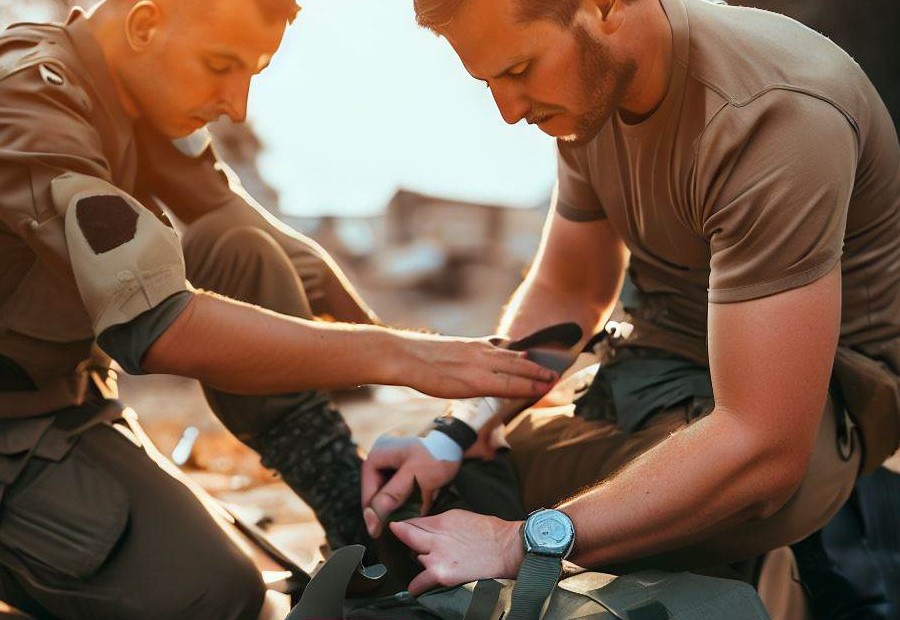
When it comes to being prepared for emergencies, having a tactical first aid kit is absolutely essential. In this section, we’ll dive into the importance and benefits of a tactical first aid kit.
From providing immediate response to injuries to enhancing survival and emergency preparedness, this kit is a game-changer. We’ll also explore its versatility in various scenarios, making it an indispensable asset in times of crisis.
So, buckle up and get ready to discover the vital role of a tactical first aid kit in keeping you and your loved ones safe and secure.
Immediate Response to Injuries
An immediate response to injuries is crucial in a tactical first aid situation. Here are the steps to ensure an immediate and effective response:
- Assess the situation and ensure personal safety.
- Call for medical assistance or emergency services immediately if available.
- Control any life-threatening bleeding promptly by applying direct pressure to the wound.
- Stabilize any fractures or dislocations using the appropriate splinting materials.
- Administer CPR if necessary and provide basic life support.
- Treat for shock by keeping the injured person lying down and elevating their legs.
- Apply cold packs or ice to reduce swelling and relieve pain promptly.
- Clean and dress any wounds promptly to prevent infection.
- Administer pain relief medication, if appropriate and available.
- Maintain open communication with the injured person, providing reassurance and support.
Enhanced Survival and Emergency Preparedness
- Immediate Response: Enhanced survival and emergency preparedness are essential aspects of a tactical first aid kit. This kit plays a crucial role in providing immediate medical assistance during emergencies, allowing individuals to promptly address injuries and prevent further complications.
- Increased Versatility: By including a wide range of medical supplies and equipment, a tactical first aid kit enhances preparedness for various scenarios, thereby contributing to enhanced survival and emergency preparedness. It equips individuals to handle different types of injuries and medical emergencies.
- Promotes Self-Reliance: Having a well-stocked tactical first aid kit ensures self-sufficiency during emergencies when immediate medical help may not be readily available. This promotes enhanced survival and emergency preparedness by empowering individuals to take care of themselves and others in their vicinity.
- Reduces Recovery Time: With the right supplies and equipment, a tactical first aid kit enables individuals to provide proper medical care, potentially reducing recovery time. This contributes to enhanced survival and emergency preparedness as it enhances the chances of a successful recovery and minimizes the impact of injuries.
- Increases Safety: By having essential medical items readily available, a tactical first aid kit helps create a safer environment, thereby enhancing survival and emergency preparedness. It allows individuals to respond to injuries quickly, preventing them from worsening or creating additional hazards.
- Boosts Confidence: Possessing a well-prepared tactical first aid kit boosts individuals’ confidence in handling emergencies, contributing to their enhanced survival and emergency preparedness. Knowing that they have the necessary tools to address injuries and medical situations provides a sense of security and preparedness.
- Enhances Survival Rate: The presence of a properly equipped tactical first aid kit significantly improves the chances of survival in emergency situations, contributing to enhanced survival and emergency preparedness. It allows immediate intervention, stabilization, and initial treatment until professional help arrives.
Versatility in Various Scenarios
One of the key benefits of a tactical first aid kit is its versatility in various scenarios. It is designed to be adaptable and accommodate different emergency situations that may arise.
| Traumatic Injuries | Medical Emergencies | Natural Disasters |
| Gunshot wounds | Heart attacks | Earthquakes |
| Stab wounds | Severe allergic reactions | Hurricanes |
| Fractures | Stroke | Floods |
| Bleeding | Diabetic emergencies | Tornadoes |
Having a well-equipped tactical first aid kit ensures that you are prepared for a wide range of scenarios, enabling you to provide immediate medical care and potentially save lives. It is crucial to consider the specific challenges and hazards associated with different situations when selecting the contents of your kit.
Fact: A study conducted by the American Red Cross found that 59% of parents did not feel confident in their ability to respond to a first aid emergency involving their child. Having a versatile tactical first aid kit can boost your confidence and ability to handle various emergencies effectively.
Frequently Asked Questions
What should be included in a tactical first aid kit for first responders encountering high-stakes events?
A tactical first aid kit should include personal protective equipment (PPE), patient assessment tools, basic first aid supplies, trauma supplies, basic airway management tools, stabilization equipment for orthopedic injuries, and a patient transport system.
In addition, location-specific supplies may be necessary, and it is important to check with a supervisor or review the scope of practice regarding the inclusion of over-the-counter medications.
What are some common supplies found in a tactical first aid kit?
Common supplies in a tactical first aid kit include tourniquets, chest seals, compressed gauze, hemostatic gauze, pressure bandages, burn sheets, splints, bag valve masks, and airway tools.
Advanced items often carried by tactical medics include endotracheal tubes, surgical kits, cricothyrotomy kits, IV supplies and fluids, and medications. Non-medical equipment such as a stretcher, flashlight, trauma shears or rescue hook, scissor leash, and diagnostic equipment may also be included.
How should a tactical first aid kit be organized and carried?
A tactical first aid kit should be set up in a portable pack that can be easily maneuvered in any terrain. It should blend in with the surroundings to avoid drawing attention but still have identification as a medic.
The kit should be modular with smaller pouches for easy organization and fast access to needed supplies. It should also be durable enough to withstand rough environments.
There are two kinds of tactical first aid kits – the main pack carried on the back containing essential gear and the on-body kit carried on the person for quick access to items like gloves, tourniquets, airways, and trauma shears or rescue hooks.
What should be included in a tactical medical kit for EMS personnel?
A tactical medical kit for EMS personnel should include personal protective equipment (PPE), airway stabilization tools, patient assessment tools, routine wound treatment tools, trauma shears, and trauma supplies.
Additional items can be added based on the types of emergency services anticipated. Routine care medical kits should include antibiotic ointment, wraps and bandages, blood pressure cuff, burn care, cold and hot packs, gauze and tape, hemostatic dressings, over-the-counter medications, personal care kit, extra PPE, splints, trauma shears, tweezers, and wound and eye irrigation supplies.
Trauma kits should include abdominal dressings, chest decompression supplies, cervical stabilizer, hemostatic dressings, Israeli bandages, King tubes, manual suction, seals for sucking chest wounds, collapsible stretcher or litter, and tourniquets. CBRN threat kits should include standard PPE, CBRN PPE, basic decontamination equipment, blister care, burn care, blood pressure cuff, King tubes, manual suction, pen light, and stabilizers for seizures.
It is important to customize the EMS tactical kit based on the expected care to provide or require, including specific medications like Epinephrine or Naloxone.
What specific equipment should SWAT medics carry in their tactical medical kits?
SWAT medics should carry a reliable tactical kit packed with life-saving gear. This includes personal protective equipment (PPE), patient assessment tools, trauma supplies, airway/breathing management tools, routine medicines, routine materials for minor trauma, ortho/sports medicine supplies, ALS/prescription drugs, and a patient transport system.
PPE includes gloves, masks, and eye protection, while patient assessment tools include stethoscopes, blood pressure cuffs, and thermometers. Trauma supplies consist of hemostatic dressings, bandages, tape, chest injury seals, and tourniquets. Airway/breathing management equipment ranges from basic airway stabilization tools to more invasive devices.
Routine medicines include over-the-counter medications, sunscreen, and insect repellent. Routine materials for minor trauma include adhesive bandages, wound cleaning tools, and topical antibiotic ointment. Ortho/sports medicine supplies are useful for treating orthopedic injuries, and ALS/prescription drugs may be carried if authorized by a physician.
A patient transport system, including stretchers, is also part of the tactical medic’s equipment. Each SWAT operator should also carry an Individual First Aid Kit (IFAK) on their vest, which includes essential items like PPE, trauma scissors, tourniquets, dressings, and chest seals.
How can tactical medics effectively carry their medical equipment in a tactical environment?
Tactical medics should consider weight considerations and use judgment to decide what is essential for each specific mission. The medical equipment should be organized in a portable pack that can be easily maneuvered in any terrain.
Body armor, weapons, and communication devices are also necessary to carry. Non-medical equipment such as lighting systems, a computer tablet, and a body cooling system may also be included.
When setting up the tactical first aid kit, professionals should consider the patient population, specific EMS supplies required, the need for mission-specific equipment, and the weight of the gear. Hands-on training courses can help tactical medics gain experience in rendering aid in crowded and high-stress environments.

